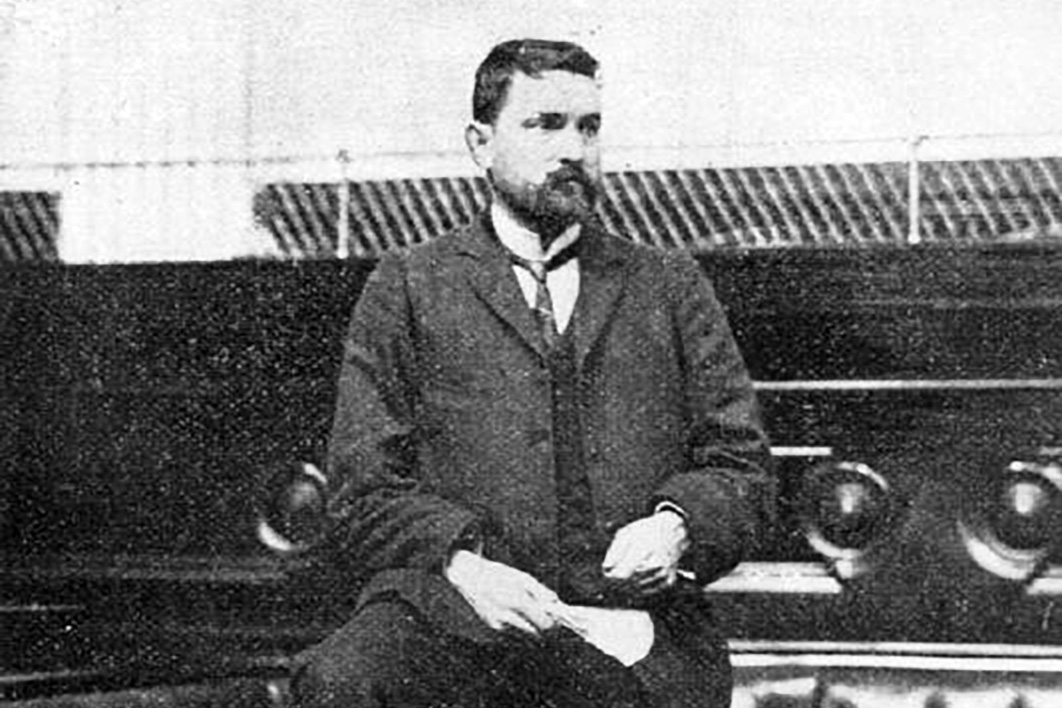Although Chris Watson was the first Labor MP to become prime minister of Australia, his brief, 113-day tenure as head of a minority government has rendered him a less-than-household name (though a good subject for a tricky question on trivia night).
In his slim new biography, In Search of John Christian Watson, Michael Easson tackles upfront an enduring puzzle about Watson — the location of his birth. Uncertainty has persisted about whether he entered the world in Chile or at sea, en route to New Zealand. Easson finds the evidence for Chile (Irish mother, German father) compelling and notes the absence of any controversy while Watson was serving as a federal MP.
Watson’s Anglo appearance and name seems to have rendered the matter a non-issue by the time he entered federal parliament in 1901 after seven years in the NSW lower house. Those Australian federal MPs who, a century later, fell foul of the High Court’s hard-line interpretation of their eligibility to sit in parliament (under section 44 of the Constitution) may be excused a moment of envy that his “Britishness” was simply taken for granted.
After a tough early life in New Zealand, Watson had found his way into NSW labour politics through the printing industry. Rising to leadership positions, he played a key role in the development of the Labor pledge, which obliged party MPs to vote as determined by a caucus majority. Easson depicts an MP whose main interest were land legislation and the White Australia Policy, the latter reflecting what the author describes as Watson’s “mainstream but terrible racism.”
Easson’s key focus is on Watson’s role as inaugural leader (elected from a caucus of eighteen) in developing the practices and policies of the federal parliamentary Labor Party. With the two-party system still a decade away, seats in the early parliaments were largely shared between the Free Trade and Protectionist parties and emerging Labor. Minority government was the norm, with Labor supporting the Alfred Deakin–led Protectionist governments that held office for most of that first decade.
Watson’s brief term saw the passage of only six bills, but its purpose-defining (for a Labor Party) Commonwealth Conciliation and Arbitration Bill was not one of them. That bill passed through parliament under his successor George Reid’s Free Trade government, which itself served a mere ten and a half months.
Views differ on Watson’s contribution to the development of the new Commonwealth, both as a supporter of Deakin and as minority prime minister. Easson cites critical appraisals by Kim Beazley senior (on the right) and Stuart Macintyre (on the left) to the effect that Deakin gained far more from the relationship than did Watson and Labor, but also defends Watson by stressing the contribution his moderate reformism and cooperation with Deakin made to establishing Labor as a respectable and credible political force.
With his measured and steady leadership, Watson reconciled divergent views and maintained party unity. The party went on to increase its national vote in 1903 and 1906, setting the stage for the emergence of the two-party system once the free-traders and protectionists were forced by Labor into a somewhat unnatural alliance.
Watson left parliament at the 1910 election having spent part of the preceding year exploring for gold in South Africa, a fairly blatant dereliction of his duty to his electorate. His parliamentary exit seems mostly a response to his wife’s desire for a more conventional home life in Sydney at a time when federal parliament was meeting in Melbourne.
Post-parliament, Watson remained an active Labor Party member, still pursuing business opportunities, and a player in the party’s policy-making and deliberative bodies federally and in New South Wales. He was prominent in the conscription debates and on the wrong side in the split they caused. Easson provides a useful outline of the development of Labor defence policy and suggests that positions on conscription within Labor were a little more nuanced than is sometimes understood. As Watson was no longer a parliamentarian at the time, his effective expulsion for his pro-conscription stance was implemented through his branch.
After politics Watson pursued an active life as president of the National Roads and Motorists’ Association, serving as president from 1920 until his death in 1941. While partisan politics was off the table in this role, his political skills were clearly useful in such an increasingly important area of public policy.
The book’s chapter structure doesn’t always seem to follow a logical pattern and the lengthy quotations are possibly overdone. And in dealing with the introduction of preferential voting by the conservative government in 1918, Easson (twice) describes the new system as “optional preferential.” Voting in House of Representatives elections has been compulsory full preferential voting since 1918.
Overall, though, this sympathetic treatment of Watson makes a useful addition to existing accounts of a prime minister who is at no risk of over-exposure. Given the bitter passions that attended Labor’s split over conscription during the first world war — and indeed the two subsequent Labor implosions — it is noteworthy that Watson seems to have maintained amicable relations with anti-conscriptionist colleagues and was generously eulogised by them (and others) upon his death in 1941. •
In Search of John Christian Watson: Labor’s First Prime Minister
By Michael Easson | Connor Court | $29.95 | 206 pages




